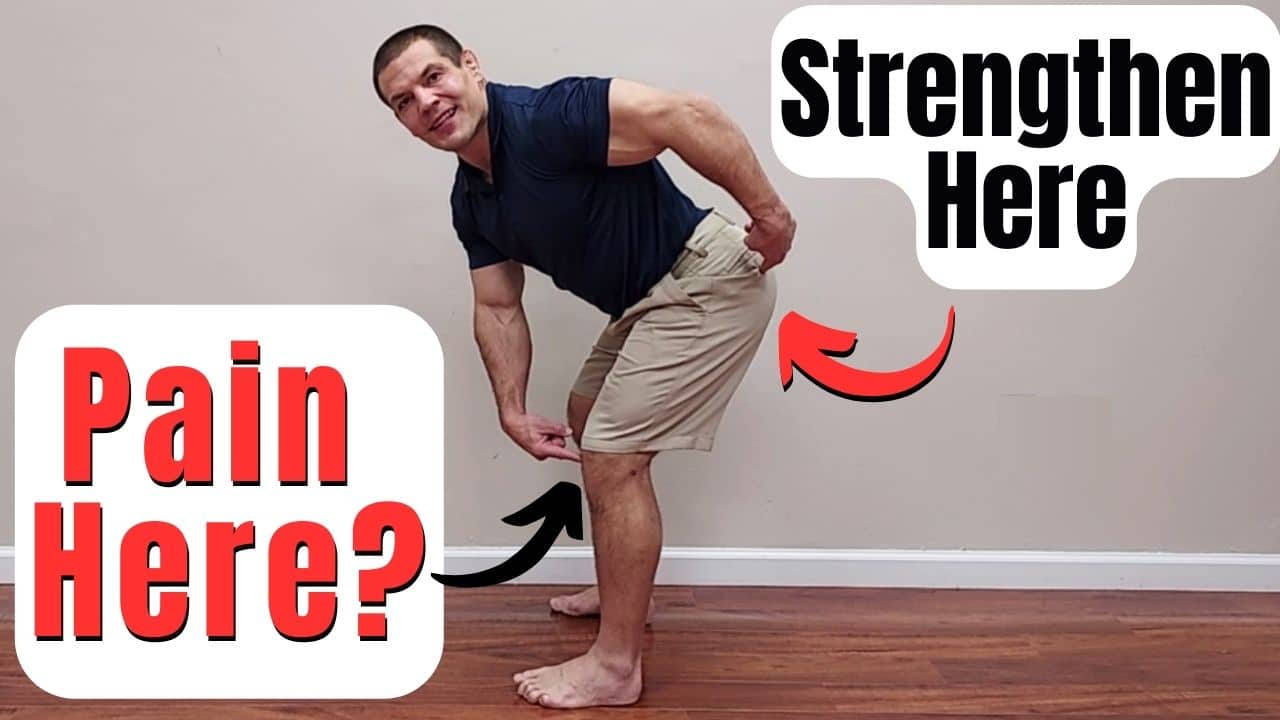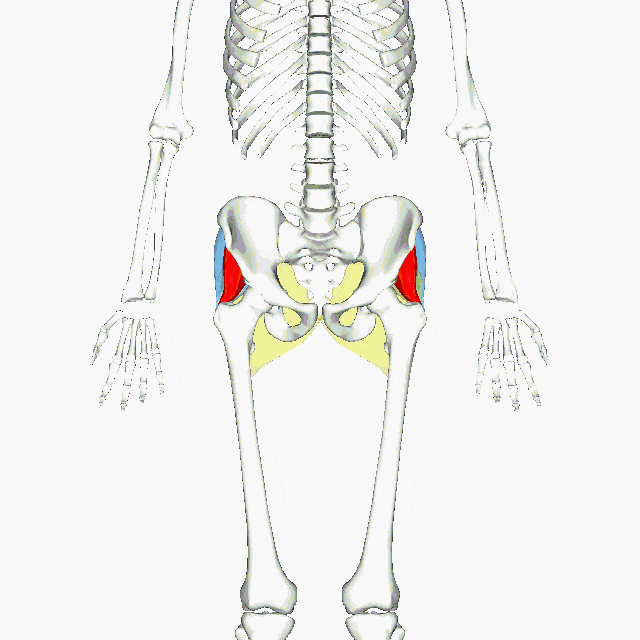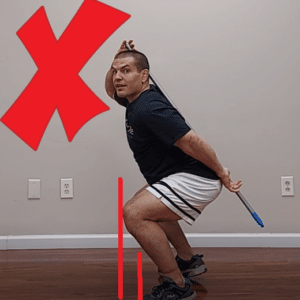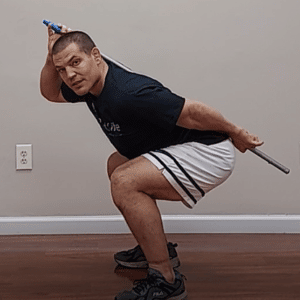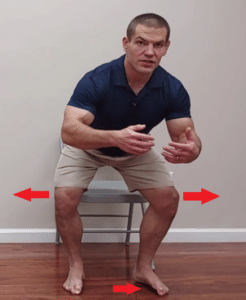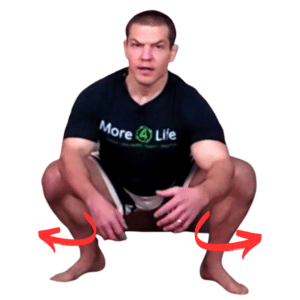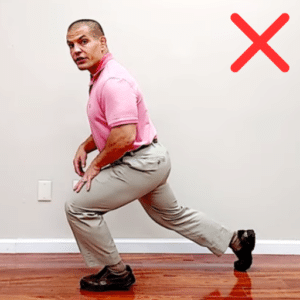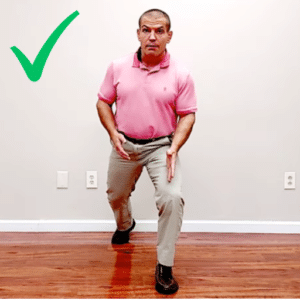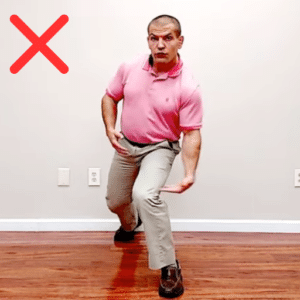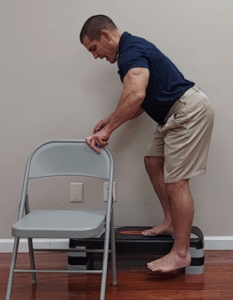If you have knee pain, and especially if you have knee arthritis, it's very likely you may have weak glutes. Weak glutes are one of the leading causes of knee pain. Watch the video below to learn 3 essential glute strengthening exercises for knee pain.
In this post, you'll learn:
- Why glute strengthening exercises are important for people with knee pain
- 3 glute strengthening exercises for knee pain
- How to do these exercises without aggravating your knee pain
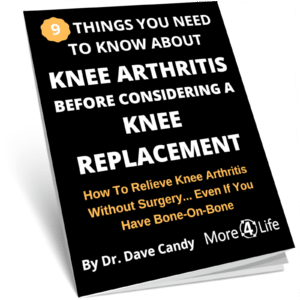
Why Are Glute Strengthening Exercises Important For People With Knee Pain?
Weak glutes (butt muscles) are one of the most common causes of knee pain.
When your gluteus maximus is weak, it causes you to use your quadriceps (thigh) muscles more. This in turn can create more compression of your kneecap on your thigh.
Additionally, weak gluteus medius and minimus muscles can your your knee to go inward. This stresses your ligaments and causes your kneecap track poorly.
In this post, I'll show you 3 glute strengthening exercises to help if you have knee pain.
These are particularly if you have knee arthritis.
If you think about the things that bother people with knee arthritis, it's things like:
- Going up and down stairs
- Getting up from the floor
- Standing up from a sitting position
- Squatting to pick something up
So the exercises are in this post are going to simulate those functional activities that you do in your everyday life.
They aim to not just get you muscle strength, but to get you functional muscle strength that improves your quality of life.
Glute Strengthening Exercise 1: The Squat
This exercise is designed to help with getting out of a chair or stooping down to pick something up.
Both involve a combination of your quadricep muscles and your glute muscles. We want to minimize the use of the quadriceps while maximizing the use of the glutes.
When you use your quadriceps, it creates more compression on your knee caps, which is particularly problematic if you have kneecap arthritis.
When you stand up from a chair with your weight really far forward on your knees, it becomes a quadricep dominant activity.
The same thing applies if you're squatting down to pick something up from the floor. If your weight is more on your toes, it's going to use a lot of quadricep force.
Conversely, if you sit back towards your heels as you're going to pick something up, that uses a lot more hip extension or glute strength.
As you do this exercise, focus on keeping your weight more back towards your heels. This maximizes the hip extension part of the movement while minimizing the knee-bending portion.
Starting position of the squat
If you're just learning how to squat, start out in front of a chair. That way, if you lose your balance, you can just sit down safely.
Spread your feet to a comfortable position about shoulder width apart.
Then you want to turn your knees out slightly.
Your gluteus medius and gluteus maximus are both hip external rotators, so turning your knees out while squatting helps activate your glutes.
You may notice that the inner side of your foot leaves the ground. That's ok.
Curl your toes slightly to form an arch with your foot. This will help give you a strong base of support to push from.
Squat exercise technique for glute strengthening
Sit back towards your heels sticking your hips backward.
You'll notice as your hips go backward, your trunk goes forward, and that's okay.
You have to lean your trunk forwards in order to not fall backward.
If you keep your trunk upright, you'll fall backward.
As you get lower into a squat, your knees are just going to bend naturally, but don't necessarily think about bending your knees.
If you think about bending your knees, you'll probably use your quads more than your glutes.
Go down to the surface of the chair, or as low as you can comfortably, keeping your knees turned out.
Then return to standing by pushing though the outer side of your heels and pushing your hips back forward.
If you're a little bit more advanced, you can go lower than the surface of a chair.
Just don't go so low that you can't get back up.
So that's the first exercise.
Now to progress from two legs, to one leg, we're going to take a half step and move to one-and-a-half legs.
Glute Strengthening Exercise 2: The Lunge
The second glute strengthening exercise is the lunge.
Lunges help with the activity of getting up from the floor or getting down onto the floor.
The lunge is an outstanding glute exercise.
You're getting hip extension like the squat, but it also requires more control on a side-to-side plane because you don't have the other leg to counterbalance you.
Starting position of a lunge
If you have knee problems or balance problems, you'll probably want to stand next to something like a chair that you can hold onto for balance.
Stagger one leg forward and one leg backward. You want fairly wide stagger.
The front leg is going to be the leg that does most of the work. Think about putting most of your weight on the outer side of the heel of your front foot.
You'll be on the toes of your back leg. Your heel shouldn't touch the floor since your back leg will be used more as a balance point rather than for producing foce.
Lunge exercise technique for glute strengthening
Slowly lower down into a lunge by sitting your hips back behind your front heel.
Remember, you want about 80% of your weight on the outer heel of the front foot.
Additionally, make sure to keep your knee aligned with your toes.
Don't allow your knee to drift inward during this exercise.
Go down only as far as you feel comfortable going.
If you have more severe knee arthritis, that may just be a little bit as you're first starting out.
Just go to a depth that feels comfortable to you.
Progress farther down over time as you're able to.
If you're a little bit more advanced, you cna do a lunge without holding on. However, don't do that at the sake of allowing your foot to drift inwards that way.
So that's the second exercise.
Now progressing on to the third exercise, we'll move fully on to one leg.
Glute Strengthening Exercise 3: The Lateral Step Down
This glute strengthening exercise is to simulate going up and downstairs.
People with knee pain often have trouble going down stairs.
However, doing a forward step down is hard on your knee, and it can be slightly unsafe as well.
Starting position of the lateral step down
Instead, face sideways on the lowest step of a staircase.
Alternatively, you can use an adjustable height aerobic step.
JungleA 31" Exercise Step Platform For H...
40% OffMake sure you have something like a banister or a chair for balance.
Set your hip, knee, foot alignment, and grip the ground with your toes as in the prior two exercises.
Turn your knee out so that your knee is over your toes.
Lateral step down exercise technique for glute strengthening
Slowly lower yourself down to the ground pushing through the outer side of the heel that is on the step.
You will need to lean your trunk forward slightly for balance, just like the squat.
Tap the heel of your non-stance leg to the floor and then raise back up. Again, push though your heel and keep your knee turned outward.
Conclusion
Those were the three glute-strengthening exercises to help with knee pain:
Hopefully by doing these glute strengthening exercises, it will help you relieve your knee pain.
Need More Help For Knee Pain?
If you live in the St. Louis area and need more help for knee pain, we'd be happy to help you.
Just tap the button below to request an appointment with one of our specialist physical therapists.

